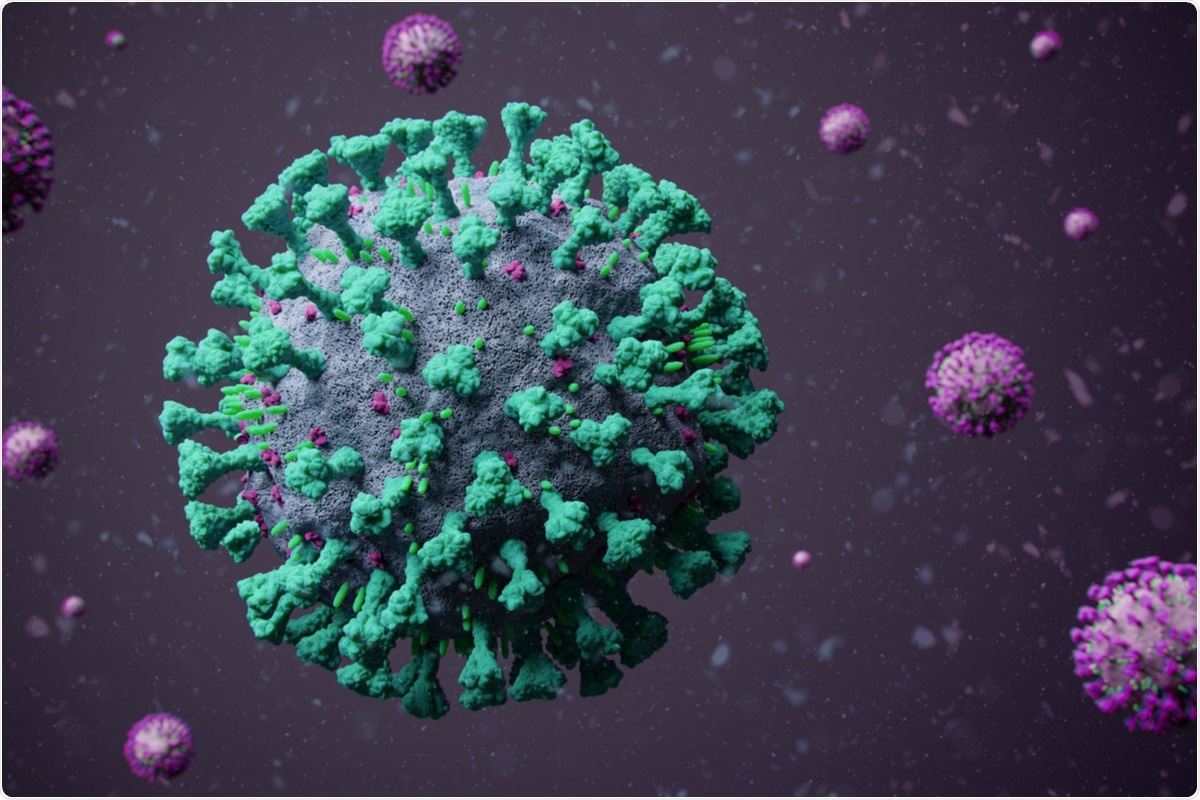The coronavirus disease 2019 (COVID-19) has killed over 4.9 million people worldwide. With a rapid transmission rate, few effective therapeutics, and a high mortality rate for at-risk groups, the disease forced governments worldwide to introduce social distancing measures, lockdowns, and mandatory face masks. These measures helped to keep the disease under control while vaccines were developed.
 Study: One dose of COVID-19 nanoparticle vaccine REVC-128 provides protection against SARS-CoV-2 challenge at two weeks post immunization. Image Credit: Darryl Fonseka/ Shutterstock
Study: One dose of COVID-19 nanoparticle vaccine REVC-128 provides protection against SARS-CoV-2 challenge at two weeks post immunization. Image Credit: Darryl Fonseka/ Shutterstock
The causative agent of COVID-19, severe acute respiratory syndrome coronavirus 2 (SARS-CoV-2), is a coronavirus similar to those that have caused minor epidemics and outbreaks in the past, such as Middle East respiratory syndrome (MERS) and severe acute respiratory syndrome (SARS).
With the high mutation rate typical of RNA viruses, multiple worrying variants have arisen since the initial strain emerged. The Delta variant is among the most concerning, as it shows increased transmissibility and improved likelihood to evade both natural and vaccine-induced immunity.
In a study available in the journal Emerging Microbes and Infections, researchers from ReVacc scientific have attempted to demonstrate the effectiveness of a new vaccine, REVC-128, two weeks post-administration.
Background
Most vaccines target the spike protein of the virus, as it is a large factor in the disease’s pathogenicity. Specifically, the most common target is the receptor-binding domain (RBD) of the S1 subunit. This binds to angiotensin-converting enzyme 2 (ACE2). The N-terminal domain of the S2 subunit is responsible for membrane fusion.
The spike protein forms homotrimers on the virus surface, and the conformation that makes up these trimers is one of the most important alterations seen in variants. In wild-type SARS-CoV-2, all three monomers are typically in the ‘down’ position, sometimes with one facing ‘up.’ This is ideal for attempting to evade an immune response. However, in more infective strain, more monomers face ‘up,’ showing a stronger ability to bond to ACE2 and increased infectivity. To combat these new variants, vaccines with a multivalent antigen display are likely to provide longer-lasting immunity.
Typically, vaccines are created from inactivated or attenuated viruses, allowing the immune system to recognize viral surface proteins with little threat. These display epitopes in close density, with multiple different antigens, displayed, but show several health concerns. Inactivated viruses can reactivate, and attenuated strains can receive pathogenic ability from wild-type infections with horizontal gene transfer.
mRNA vaccines avoid this issue by using the host’s cell machinery to produce a viral particle. With no replicative viral mRNA present, there is no danger. Another strategy that has increased in popularity in recent years involves antigens mounted on viral-like particles or nanoparticles. So long as the antigens are present at a sufficient density, these can result in similar levels of immune response to traditional vaccines, with near to no danger.
The study
The researchers have developed a nanoparticle-based vaccine with trimeric spike ectodomain subunits multimerized onto a ferritin nanoparticle. This should present the epitope for the RBD to the immune system, stimulating neutralizing antibody production. Avoiding including the S2 subunit minimizes the risks of antibody dependant enhancement, through which the immune response can boost viral infectivity or cause undue harm through inflammation.
When comparing their new vaccine, they attempted to observe the protection given by one dose in Syrian golden hamsters by collecting their sera on day 13. The mice showed significant neutralizing activity against not only wild-type SARS-CoV-2 but also against pseudoviruses carrying the D614G mutation – a widely spread mutation associated with increased immune evasion and transmission. Like other vaccines, the hamster sera showed slightly reduced activity against Delta variant pseudoviruses and further reduced activity against Beta pseudoviruses.
Conclusion
The authors highlight the value of their new vaccine in protecting those unable to receive other COVID-19 vaccines, such as the immunocompromised or those allergic to mRNA vaccines. The backbone of the nanoparticle, ferritin, has already been proven safe in influenza vaccines that have begun clinical trials.
Using a one-dose vaccination regimen could increase worldwide vaccination rates, especially in countries that struggle to maintain the logistics necessary to establish the long cold chains required to keep most vaccines stable. On that topic, early vaccine stability data suggests that REVC-128 is much more stable at lower temperatures than most mRNA vaccines, further reducing the logistics burden. As mass vaccination rates stall in the United Kingdom and the United States, more nanoparticle-based vaccines could help improve global rates.